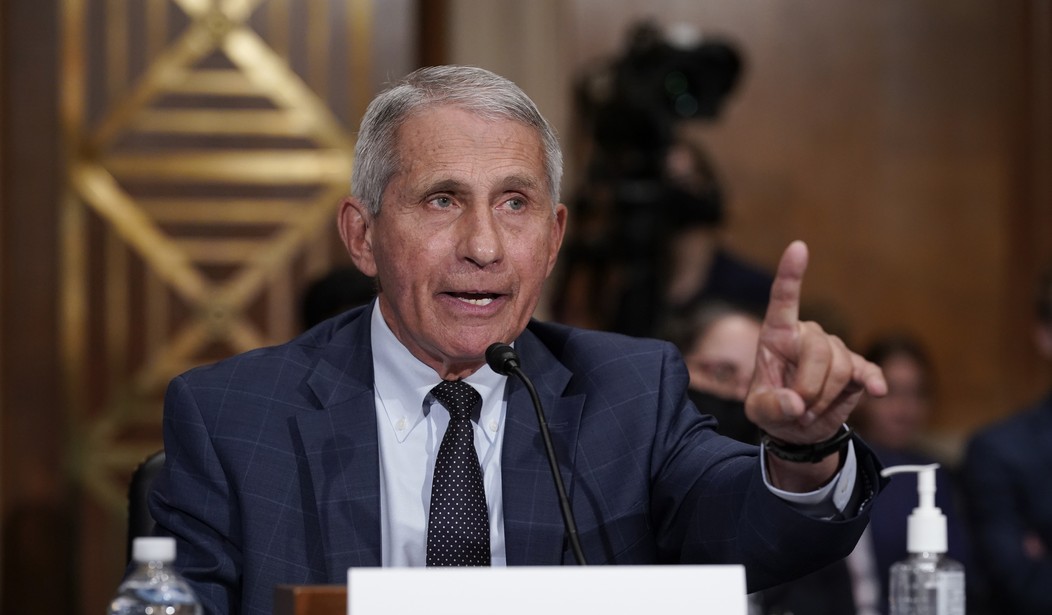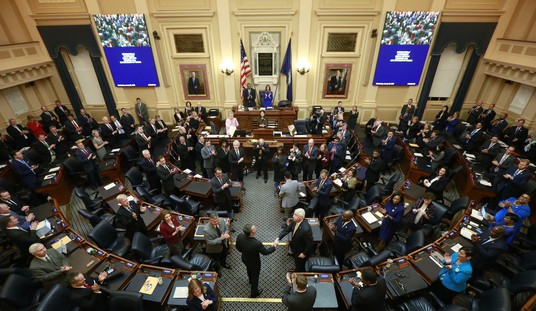I’ve seen a lot of this material before but never in such detail and concentration. This lengthy article walks though the behind the scenes machinations which led to the creation and publication of a scientific paper designed to dismiss the lab leak theory. That paper was then cited by Dr. Fauci and others as proof that COVID-19 had a natural origin (but Fauci didn’t reveal he had helped organize the effort to write the paper).
What we’ve known for some time is that the academics who were recruited for this task had significant doubts about it. Again, you’ve probably seen several of these quotes, but this piece really points out how the issue of the lab leak was really the central question being debated behind the scenes and even after the paper was published, scientists involved continued to have serious doubts. All of this was pretty clearly a PR exercise in which science often took a backseat.
Published early in the pandemic, an article in Nature Medicine titled “The proximal origin of SARS-CoV-2” — known to many simply as “Proximal Origin” — helped push the lab leak theory of the origins of COVID-19 to the outer fringes by March 2020.
“We do not believe that any type of laboratory-based scenario is plausible,” the analysis stated, which had been read about three million times within weeks of publication. “Our analyses clearly show that SARS-CoV-2 is not a laboratory construct or a purposefully manipulated virus.”…
The article was endorsed by Fauci in front of reporters and cameras at the White House, cited by the Defense Intelligence Agency, and briefed to analysts at the State Department. According to recent reporting, Fauci cited the “Andersen paper” to persuade the Central Intelligence Agency to alter its assessment of the origin of the pandemic from lab to nature.
The claim that a lab leak wasn’t “plausible” became a lever which was used to move agencies and the public away from the possibility of a lab lead. But it was clearly a lie at the time it was written in the sense that the authors knew it was plausible and worried extensively about how plausible it was.
On February 8, an early draft of “Proximal Origin” circulated to the scientific funders — Farrar, Fauci, Collins — and the gain-of-function virologists — Fouchier, Koopmans and Drosten — firmly ruled out the possibility that SARS-CoV-2 had been engineered, but still considered a lab origin via serial passage a viable scenario. The group also considered spillover through an intermediate host and undetected circulation in humans.
The changes did not go far enough for Fouchier. In response to the new draft, he once again pushed back on any lab origin by arguing no close relative to SARS-CoV-2 had been described in published scientific literature.
“I am not in favor of publishing as is. I fail to see how the last of the three discussed scenarios (passaging) does not fall under the category of ‘laboratory manipulation.’ There is no evidence that might hint to this scenario and hence it should be put aside just like the engineering option,” he said. “As far as I am aware, no laboratory has worked on passaging the pangolin-origin virus, the bat-CoV RaTG13, or another closely related virus or had access to it prior to the outbreak. That nCoV-2019 could originate from a SARS-like virus in Chinese labs can also be excluded.”
The authors did not buy that argument either.
“Crap comments … basically just saying it can’t be true,” Holmes said.
“Not only has this been done, it’s specifically being done in Wuhan. In BSL 2,” Andersen wrote. “That in itself means that we can’t just dismiss a lab theory off hand by saying ‘not possible.’ That would be very foolhardy.”
The proximal origin paper suggested it was possible to tell the virus hadn’t been manipulated in a lab but privately the authors admitted there were ways to manipulate the virus which could not be detected.
“You can synthesize bits of the genes de novo with perfect precision and then add them in without a trace,” Garry wrote in a February 6, 2020, message.
Even after “Proximal Origin” was published, Andersen expressed doubts to his coauthors that they could truly rule out engineering since a lab technique called Gibson assembly does not leave signs of genomic manipulation .
“No obvious signs of engineering anywhere, but that furin site could still have been inserted via Gibson Assembly … and clearly creating the reverse genetic system isn’t hard,” he said.
Even after the paper was published, doubts persisted.
By April 3, 17 days after “Proximal Origin” first appeared in Nature Medicine, Andersen began “second guessing” in light of other scholarship. A 2013 paper posted to the virology blog Virological showed that serial passage experiments on coronaviruses tended to amplify a 12 nucleotide insert in the spike protein — like the furin cleavage site. These inserts were “arginine rich,” just like the furin cleavage site in SARS-CoV-2, Andersen said.
“The whole furin site being messed with in [tissue culture] has me second-guessing myself,” Andersen said on Slack. “When we went through this whole process, remember we talked about ‘passage might make viruses acquire these sites’? We couldn’t find a reference, but somebody just posted on Virological, which led me to this [paper].”
Garry described the pattern as “freaky.”
“I don’t think any of this new knowledge goes against what we said in the paper, but it does make our ‘definitely not passage’ argument weaker,” Andersen said.
Andersen also pointed to a scientific flaw in the paper’s reasoning.
More digging into the scientific literature showed the virologists had likely misinterpreted the meaning of the virus’ O-linked glycans, carbohydrate chains that are usually attached on proteins close to prolines, and were predicted to exist in SARS-CoV-2 because of the proline (P) in the furin cleavage site (PRRA). Because these carbohydrate chains can help shield viruses from a host’s immune system, the virologists reasoned that SARS-CoV-2 must have evolved naturally in the presence of an immune system.
“The generation of the predicted O-linked glycans is also unlikely to have occurred due to cell-culture passage, as such features suggest the involvement of an immune system,” Proximal Origin reads.
But by a month after its publication, Andersen privately conceded that a 2017 paper showed this was likely wrong, and that this error toppled a key argument against the possibility of the virus arising out of certain lab experiments.
There’s much more to the full article including lengthy sections on aspects of the debate I’ve barely touched on here. There’s also a helpful timeline which shows what people were saying in public vs. what they were saying at the same time in private. None of this settles the question but it does show that those who pushed hardest to have the public consider it settled knew privately what they were saying couldn’t be proven based upon the information they had at the time.







Join the conversation as a VIP Member